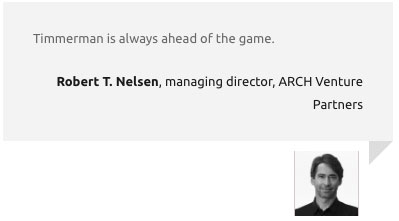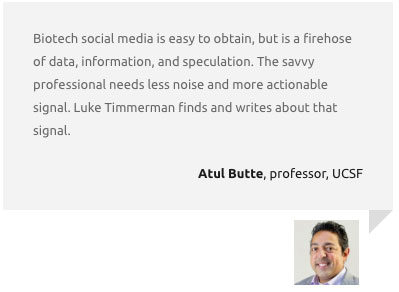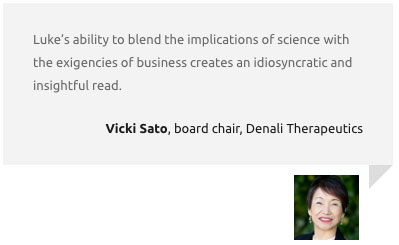Why I Left European Science

Sam Rodriques, co-founder and CEO, FutureHouse
Monday was my last day as a group leader at The Francis Crick Institute.
I got my job at the Crick in 2020, almost exactly 5 years ago, right as COVID was beginning. I had finished my PhD in 2019, and had always told myself that I would only ever be an academic if I could find a place where I didn’t have to write grants, didn’t have to teach, and wasn’t on a tenure clock.
The Crick is one of a very small number of research institutes that affords its academics such privileges. It is endowed with extraordinary facilities, right in the heart of London. The offer for early-career researchers is almost too good to be true: almost $1 million a year in core support in personnel, reagents, and core facility usage, plus a generous startup equipment budget.
The Crick delivered on its promises, but European science faces some extraordinary headwinds. The general lack of funding has been well-documented. Red tape is far beyond anything that American academics have to deal with. But the biggest challenge of all is cultural. It’s less visible and far more pernicious.
Consider this example. About six months in, I was sitting in a meeting with some other faculty and core facility leaders, arguing that we needed to build out an ambitious screening platform similar to those at the Broad Institute of MIT and Harvard. Heads bobbed up and down. I thought we were getting somewhere.
As people were filing out, one of the group leaders hung around behind.
“Sam, you really have a lot of that American energy.”
I chuckled.
“Don’t worry,” she said, “Stay here for three years, and we’ll beat it out of you.”
It was sardonic humor. I later came to understand what she meant.
Another time, I showed up at the sequencing core facility at 3 pm on Friday with a library of samples ready to load for a batch run. I was eager to come back a day or two later with lots of data to sort through and analyze.
If only things moved that fast. I was told that I could submit a request form that would be processed the week after next (not next week, of course, because the person responsible was on annual leave). Then, when the person was back from leave, they would reach out to schedule a time to discuss my requirements in more detail. I asked if I could simply load the library on a benchtop Illumina Miseq machine that was sitting, idle, in plain view. This request was met with bewilderment.
Forget about it.
Then there was the time health and safety regulators were called to inspect my lab because I had stacked two stackable hybridization ovens without a proper risk assessment on file.
Worst of all, I felt the gnawing sense of falling behind in the global scientific competition, as one promising student or postdoc after another would decline an offer to go to San Francisco or Boston. Usually, that was because they were excited about the work we were doing, and wanted to be where the action was, where there was a critical mass of potential collaborators with complementary skills.
This is only part of the story, though. The UK abounds in excellent researchers. The Crick, in particular, is a remarkable institution. Paul Nurse, the Crick’s visionary leader, has attracted some of the most talented early-career group leaders in the world, like Pontus Skoglund, David Bauer, and many others. Paul has also cultivated a “can-do” attitude among his executive team: whenever I needed something, I knew that Paul or Richard Treisman or Sam Barrell or Steve Gamblin or another executive would back me up.
If the UK wants to maximize its scientific output, it needs to double down on funding for the Crick and its other top-performing institutions.
The UK has also been at the forefront of new experiments in ways to do science. ARIA, the UK’s Advanced Research & Invention Agency, has done a spectacular job in moving fast and supporting contrarian research through its programs and through new structures like Focused Research Organizations (FROs). Pillar VC’s new Encode fellowship (also ARIA-supported) is one of the best ideas I have seen for how to bring AI talent to hard science problems.
Nevertheless, there is only so much you can do against a cultural background that penalizes ambition. The further you got at the Crick away from the top executives, the more you would encounter the traditional European “second place is OK as long as you gave it a good shot,” kind of attitude.
The group leader’s sardonic warning was right: I did not last for three years. I was burning with ambition to seize the moment with AI to answer biological questions. It took me about a year to recognize that the UK would not be a long-term home, and another year and a half to found FutureHouse, in the second half of 2023.
I have lived in San Francisco since then. I haven’t regretted that decision for a minute. I have found talented students and postdocs who want to solve big problems. I have found investors willing to take risks. I have found a supportive community of entrepreneurs. It was the right move to pursue an ambitious research agenda, and pursue entrepreneurial dreams, in America.
At the elite levels, Europe has an extreme brain drain problem. The most ambitious people are mostly in the US, and so the most ambitious people continue to come here.
The US’s position as a talent magnet is not something we can take for granted; I am sure that with the correct combination of policies, we could eventually drive people elsewhere.
But it is also not a position that will be easily lost. There simply is nowhere else in the world that is anywhere near as attractive for talent. As long as the most ambitious and determined people can still find ways to get here, they will.



